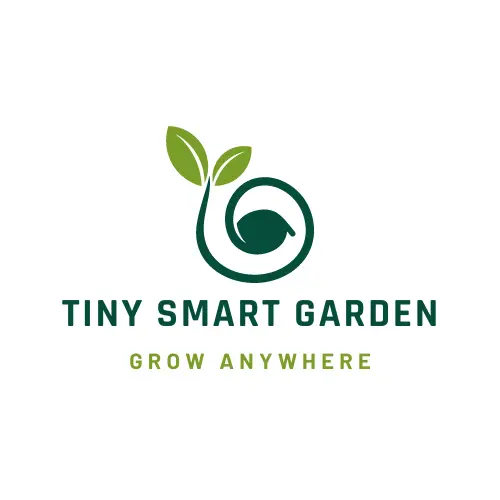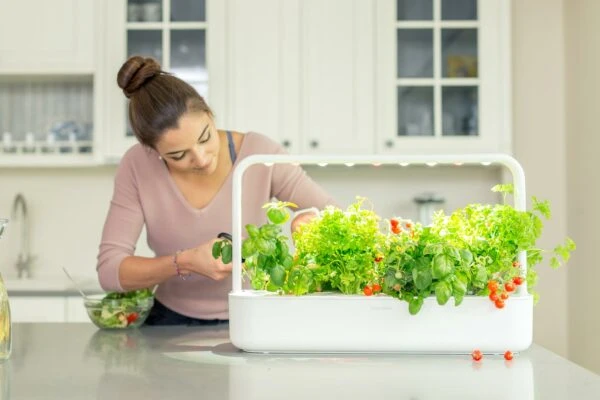CLICK & GROW The Smart Garden 9
People are always looking for innovative ways to integrate technology into their daily lives. One area that has seen a significant transformation in recent years is gardening. Smart gardening, also known as connected gardening, is the latest trend that allows gardeners to automate and monitor their gardens using technology. This article will explore the concept of a smart garden, its benefits, and how it works.
Table of Contents
What is a Smart Garden?
A smart garden refers to a garden that utilizes technology to automate and monitor its various processes. It involves the use of sensors, controllers, and apps to manage plant growth, irrigation, and lighting. Smart gardens are designed to create optimal growing conditions for plants by monitoring and adjusting various parameters such as temperature, humidity, and light intensity.
Smart gardens are also referred to as connected gardens, as they are connected to the internet and can be controlled remotely using a smartphone or computer. This allows gardeners to monitor their plants and make adjustments from anywhere in the world.
Discover the 5 Best Smart Gardens for Your Home
Benefits of Smart Gardens
The benefits of smart gardens are numerous. One of the most significant benefits is that they help to conserve water by using automated irrigation systems that can be programmed to water plants only when needed. This can save water and reduces the amount of time gardeners spend watering plants manually.
Smart gardens also help to improve plant growth and health by providing optimal growing conditions. This is achieved through the use of sensors that monitor environmental conditions and make adjustments to temperature, humidity, and light intensity.
Another benefit of smart gardens is that they are low maintenance. Gardeners no longer have to spend hours tending to their plants as technology takes care of the majority of the work.
Components of a Smart Garden
A smart garden is made up of several components, including sensors, controllers, automated irrigation systems, and lighting. Each of these components plays a vital role in ensuring the health and growth of plants in a smart garden.
Smart Garden Sensors
Smart garden sensors are designed to monitor various environmental conditions such as temperature, humidity, and light intensity. They provide real-time data that can be used to make adjustments to the growing conditions of plants. Sensors can be placed in the soil, on the plants themselves, or in the surrounding environment.
Automated Irrigation Systems
Automated irrigation systems are used to water plants automatically. They can be programmed to water plants based on specific criteria, such as soil moisture levels or time of day. This ensures that plants receive the right amount of water at the right time.
Smart Garden Controllers
Smart garden controllers are used to control various components of a smart garden, including sensors, irrigation systems, and lighting. They are connected to the internet and can be controlled remotely using a smartphone or computer.
Smart Garden Lighting
Smart garden lighting is designed to provide optimal lighting conditions for plants. It can be programmed to provide specific light wavelengths at specific times to promote plant growth and development.
Smart Garden Set-Up
Setting up a smart garden requires some initial investment in terms of time and money. The first step is to decide on the type of plants you want to grow and the size of your garden. Next, you will need to choose the appropriate sensors, controllers, and irrigation systems based on your specific needs.
Once you have all the necessary components, you can begin setting up your smart garden. This involves installing the sensors and irrigation systems and connecting them to the smart garden controller. You will also need to set up a smart garden app on your smartphone or computer to control the various components of your garden.
Best Plants for a Smart Garden
Not all plants are suitable for smart gardens. Some plants require specific growing conditions that may not be possible to replicate in a smart garden. Some smart gardens offer a selection of smart pods with seeds already planted inside. You can also buy seeds separately. Some of the plants that thrive in smart gardens are:
- Herbs: Basil, cilantro, parsley, mint, and thyme all do well in the Smart Garden and can add fresh flavors to your meals.
- Salad greens: Arugula, lettuce, and kale can be grown in the Smart Garden and harvested for a tasty and nutritious salad.
- Tomatoes: The compact varieties of cherry tomatoes, such as Tiny Tim or Red Robin, can be grown in the Smart Garden and provide a delicious snack.
- Strawberries: Alpine or wild strawberries can also thrive in the Smart Garden and produce small, sweet fruit.
You can dive deeper into the best plants, tips, and FAQ for growing in a smart garden here.
Smart Garden Apps
Smart garden apps are designed to help gardeners monitor and control their gardens remotely. They provide real-time data on environmental conditions, plant growth, and irrigation levels. Some popular smart garden apps include Parrot Flower Power, GreenIQ, and Rachio.
Smart Garden vs. Traditional Gardening
Smart gardening offers several advantages over traditional gardening. One of the most significant advantages is that it saves time and reduces the amount of manual labor required to maintain a garden. Smart gardens are also more water-efficient and can help to conserve water.
Another advantage of smart gardening is that it allows for more precise control over growing conditions. This can lead to better plant growth and yield. However, traditional gardening still has its advantages, including the ability to grow a wider variety of plants and the satisfaction of hands-on gardening.
Environmental Impact of Smart Gardens
Smart gardens are a sustainable and eco-friendly way to grow plants indoors. One of their primary environmental benefits is that they require less water and fertilizer than traditional gardens, resulting in a reduction of pollution caused by runoff. By using a precise watering system and providing nutrients directly to the plant’s roots, smart gardens avoid wasteful over-watering and over-fertilizing that can lead to soil degradation and contamination.
They can also help reduce the use of pesticides and other harmful chemicals in gardening. The indoor environment is less susceptible to pests and diseases than outdoor gardens. And with its controlled environment, you can avoid the need for synthetic chemicals to control pests or diseases that might harm the plants. By using organic and natural alternatives, you can grow plants that are not only healthier but also free of harmful chemicals, making them safe for you, your family, and the environment.
Smart Gardens in the Future
Smart gardens are still a relatively new concept, but they are rapidly gaining popularity. As technology continues to improve, smart gardens will likely become even more advanced and sophisticated. In the future, we may see smart gardens that are fully automated and can be controlled using voice commands.
How to Start Your Own Smart Garden
Starting your smart garden is relatively easy. The first step is to do some research and decide on the type of plants you want to grow. Next, you will need to invest in the necessary components, including sensors, irrigation systems, and controllers.
Once you have all the components, you can begin setting up your smart garden. This involves installing the sensors and irrigation systems and connecting them to the smart garden controller. You will also need to set up a smart garden app on your smartphone or computer to control the various components of your garden.
Smart Garden FAQs
What is the difference between a smart garden and a hydroponic garden?
- A smart garden uses technology to automate and monitor the growing conditions of plants, while a hydroponic garden grows plants without soil.
Can a smart garden be used indoors?
- Yes, smart gardens can be used indoors as well as outdoors.
Do I need to have prior gardening experience to start a smart garden?
- No, you do not need to have prior gardening experience to start a smart garden. Technology does most of the work for you.
Are smart gardens expensive to set up and maintain?
- Smart gardens can be more expensive to set up than traditional gardens, but they can also save you money in the long run by reducing water usage and plant loss. Maintenance costs may also be lower as smart gardens require less manual labor.
Can I grow any plant in a smart garden?
- Not all plants are suitable for smart gardens. Some plants require specific growing conditions that may not be possible to replicate in a smart garden. There are several types of plants that are well-suited to smart gardens, including herbs, leafy greens, and tomatoes.
Do I need to constantly monitor my smart garden?
- No, smart gardens are designed to be self-sufficient and require minimal monitoring. It is still important to check the app periodically to ensure that everything is functioning correctly.


